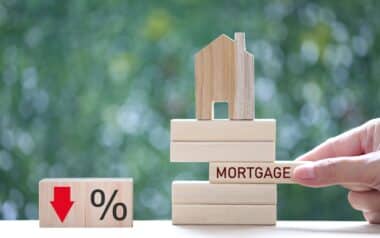Rental prices across the UK are forecast to rise sharply over the next five years, exacerbating the financial challenges faced by tenants. This looming increase comes amid a significant exodus of landlords from the buy-to-let market, driven by a combination of higher taxes, stringent regulations, and rising mortgage costs. With fewer landlords maintaining their rental properties and demand for housing remaining high, the imbalance in the rental market is expected to deepen.
According to analysis from Savills and other experts, this shrinking supply of rental homes will fuel a dramatic rise in rents, potentially adding £200 per month to average tenant costs. The crisis is especially severe in urban centers such as London, where renters already allocate nearly half of their income to housing. The impact of these changes is set to ripple through the housing market, making affordable accommodations increasingly difficult to find.
Forecasts Point to Significant Rent Increases
According to new research from Savills, rental prices across the UK are expected to rise by 17.6% between 2025 and 2029, adding to the record-breaking rent increases seen in recent years. This trend means that rental price growth is set to far outpace wage increases, which are projected to climb by just 15% over the same period.
The impact of these increases is already being felt acutely in London, where tenants spend nearly half of their monthly income on rent, the highest proportion in the country. The disparity between the availability of rental homes and the growing demand continues to drive these costs higher. The Royal Institution of Chartered Surveyors (RICS) noted in a recent survey that while demand for rental properties has eased slightly from its pandemic peak, the supply of available homes continues to worsen, deepening the imbalance.
Savills’ research analyst Guy Whittaker emphasized the underlying issue, stating, “High demand and low supply have been the influence behind the significant rental growth seen over the past few years.” With no significant increase in housing stock expected in the near future, renters are likely to face even more challenging conditions.
Landlord Exodus Leaves Gaps in the Market
The departure of landlords from the rental market is one of the most significant contributors to the shrinking housing supply. Regulatory and financial pressures are driving many property owners to sell off their rental portfolios, exacerbating the crisis. For instance, proposed changes to energy performance standards will require rental properties to achieve a C energy rating by 2030. The costly upgrades needed to meet these standards have left many landlords questioning the viability of remaining in the market.
Higher mortgage rates have also added to the burden on landlords, reducing profitability and deterring new buy-to-let investors. Additionally, increased stamp duty surcharges for second homes have created further barriers for those considering entering or expanding their portfolios. Recent data from Zoopla indicates that in some areas, up to one-third of properties listed for sale were formerly rental homes, underscoring the scale of landlord withdrawals from the sector.
As reported by The Telegraph, these challenges have forced thousands of landlords out of the market, which is likely to drive rents even higher over the coming years. The analysis highlights that renters could face increases of £200 per month on average by the end of this period if the current trends persist.
Tenants Face Escalating Costs
For renters, the implications are severe. Rising rents, already at record levels, are compounding the financial strain caused by increased living expenses, including energy bills and general inflation. With demand for rental housing remaining high and supply dwindling, tenants are left with few affordable options.
The housing crisis is particularly acute in urban centers like London, where rents are significantly higher than the national average. As rental prices climb, tenants are increasingly forced to stretch their budgets or compromise on the quality and size of their accommodations. Without intervention, this trend risks pushing more households into precarious living situations or forcing them to relocate to less expensive but less accessible areas.










Charities have campaigned for years for this rent rising legislation and our government’s have obliged. Be careful what you wish for.